200 Hour Yoga Teacher Training Course In Ubud, Bali
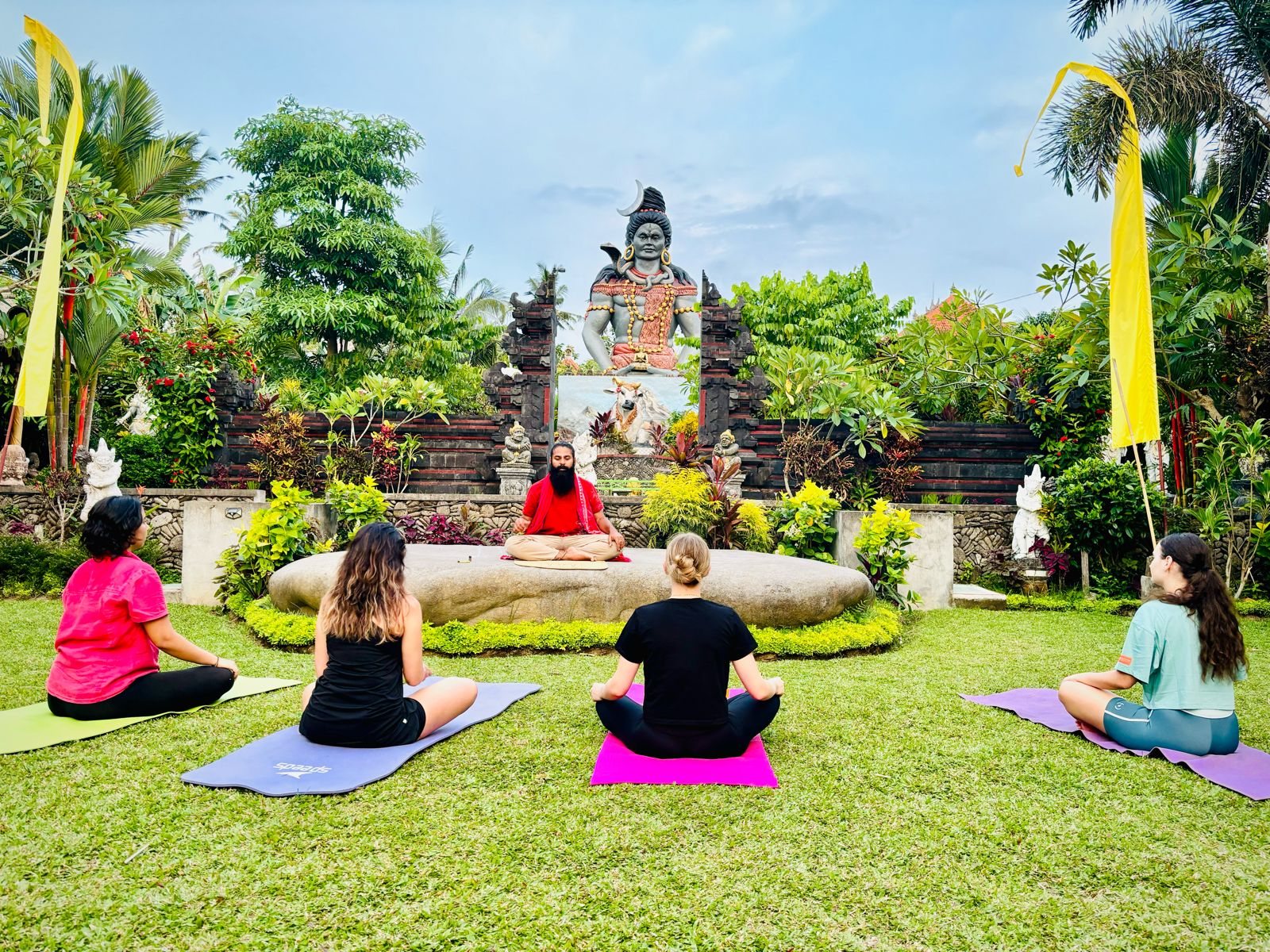
200 Hours Yoga Teacher Training in Bali, Indonesia
Embark on a profound journey of self-discovery and yogic mastery with our 200 Hours Yoga Teacher Training in Bali at Upasana Yogshala, nestled in the tropical paradise of Bali, Indonesia. Rooted in the authentic traditions of yoga, this comprehensive program is designed to nurture practitioners at every level, from beginners to seasoned yogis. Led by our experienced and certified instructors, the course covers a diverse curriculum encompassing asanas, meditation, pranayama, philosophy, anatomy, and teaching methodology.
Key Highlights of the Training:
- Foundational Understanding: Gain a solid understanding of yoga principles, postures, and philosophy, forming the foundation for a lifelong practice.
Holistic Transformation: Experience holistic growth with a curriculum covering physical, mental, and spiritual aspects of yoga. - Deepening Personal Practice: Refine your asanas, pranayama, and meditation techniques under expert guidance.
- Stress Management & Mindfulness: Acquire tools for stress management and mindfulness, enhancing mental resilience and emotional well-being.
- Globally Recognized Certification: Attain a certification that opens doors to teaching yoga and sharing its benefits worldwide.
- Community & Connection: Join a supportive community of fellow practitioners, fostering connections that extend beyond the training.
- Cultural Immersion: Immerse yourself in the rich culture of Bali, adding a unique and enriching aspect to your yoga journey.
- Self-Discovery & Inner Growth: Embark on a journey of self-discovery, cultivating a balanced and harmonious approach to life.
The serene and vibrant environment of Bali, with its lush landscapes and tranquil beaches, provides the ideal setting for this transformative experience. Whether your goal is to deepen your personal practice or to become a certified yoga instructor, our 200 hour YTTC at Upasana Yogshala is a transformative stepping stone on your yogic journey. Join us in this immersive and supportive environment, where mind, body, and spirit unite in the pursuit of holistic well-being.
Our Other Yoga Retreats in Bali:
Limited Time offer
For details about the course
200 Hours Yoga Teacher Training Course Content

Introduction to Yoga
- A session to introduce the fundamentals of yoga, including a traditional Fire Ceremony to invoke positive energy.
- Gain insight into the brief history and origins of yoga, tracing its roots and evolution over time.
- Understand the different paths of yoga, such as Karma, Bhakti, Jnana, and Raja yoga, and their relevance in practice.
Mantra & Mantra Chanting
Mantra: Mantras are sacred sounds, words, or phrases used to focus the mind and attain spiritual attention. It is a powerful tool for mental clarity and spiritual growth. Here are some key aspects of mantras:
- Art of Mantra: Understanding how mantras work and their spiritual significance.
- Science of Mantra: The scientific reasoning behind the sounds and vibrations in mantras.
- Power of Mantra: The transformative effects of mantras on the mind, body, and spirit.
- Formation of Mantra: How mantras are structured and their phonetic arrangement.
- Mantra as a Religion: The role of mantras in various religious practices.
- Vibration of Sound: The energetic vibrations produced by chanting mantras.
Mantra Chanting: Chanting mantras is a potent spiritual practice that creates harmony between body, mind, and soul. It helps in centering your energy and developing inner peace. Some popular mantras and their benefits include:
- Om Mantra: The primordial sound of the universe.
- Shiva Mantra: For peace and balance.
- Durga Mantra: For strength and energy.
- Kundalini Mantra: Awakens the Kundalini energy within.
- Ganesha Mantra: Removes obstacles and grants success.
- Gayatri Mantra: Purifies the mind.
- Maha Mritunjaya Mantra: For healing and longevity.
- Suryanamaskar 12 Mantras: A powerful chant for sun salutations.
Hatha Yoga Asana & Theory
- Learn the foundations of Hatha Yoga, which emphasizes balance through physical postures (asanas).
- Practice basic asanas to build strength and flexibility.
- Progress to intermediate and advanced asanas to deepen your practice.
- Understand the principles of sequencing and flow, creating a smooth transition between postures.
- Focus on alignment principles to ensure proper body positioning in each asana.
- Learn to apply adjustments and modifications for varying skill levels and body types.
Traditional Hatha Yoga
Traditional Hatha Yoga is a physical and mental discipline designed to promote wellness, strength, and flexibility. Our Hatha Yoga sessions include:
- Pavanmuktasana Series 1, 2, & 3: For joint flexibility and digestion.
- Surya Namaskar (Sun Salutation): A 12-asana sequence for energy and vitality.
- Chandra Namaskar (Moon Salutation): A balancing sequence to cool the body.
- Standing, Sitting, and Balancing Postures: For strength and stability.
- Backbending, Forward Bending, and Twisting Postures: For flexibility and spinal health.
- Inversions & Meditative Asana Series: To improve focus and internal balance.
Over 140 series of asanas are covered to build physical and mental discipline.
Theory of Hatha Yoga: Theory is essential to understanding the philosophy and purpose of Hatha Yoga. Topics include:
- Hatha Yoga Philosophy: The spiritual framework of Hatha Yoga.
- Yoga as Therapy: Healing through asanas and pranayama.
- Connection with Chakras, Nadis, and Kundalini: The subtle body and energy flow.
Pranayama & Shatkarma
- Master yogic breathing techniques such as Ujjayi, Nadi Shodhana, and Kapalabhati.
- Discover the benefits and effects of each breathing technique on the body and mind.
- Learn how to incorporate breathwork into your asana practice, enhancing energy flow and mindfulness.
Pranayama (Breathing Practices)
Pranayama is the practice of controlling the breath, a vital life force. Our four-week pranayama course includes:
- Week 1: Introduction to pranayama techniques.
- Week 2: Deepening the practice and building core strength.
- Week 3: Advanced breath retention and chakra awareness.
- Week 4: Teaching practices and mastering breath control.
Key pranayama practices include:
- Nadi Shodhana (Anulom Vilom): Balancing breath through alternate nostrils.
- Kapalbhati: Energizing the body and clearing the mind.
- Ujjayi (Ocean Breath): Promoting calm and focus.
Yoga Philosophy
Yoga Philosophy teaches the spiritual foundations of yoga. This includes:
- Week 1: Explore an overview of the Yoga Sutras of Patanjali or other significant yogic texts.
- Week 2: Study of the Yoga Sutras of Patanjali.
- Week 3: Exploring Bhagavad Geeta and Upanishads.
- Week 4: Chakras, Nadis, Kundalini, and deeper spiritual exploration. Understand the eight limbs of yoga, which outline a path for living a purposeful and enlightened life.
Yoga Nidra (Psychic Sleep)
Yoga Nidra allows you to access a state between waking and sleeping. In this practice, you can achieve deep relaxation and rejuvenate your mind and body. The four-week course includes:
- Week 1: Basic relaxation techniques.
- Week 2: Visualization practices.
- Week 3: Chakra awareness.
- Week 4: Inner flame meditation.
Yoga Cleansing (Shatkarma)
Shatkarma refers to six purification techniques that cleanse the body and mind. You’ll learn:
- Jihwa Dhauti: Tongue cleansing.
- Jalaneti: Nasal cleansing with water.
- Kapalbhati: Mind cleansing through rapid exhalation.
Ashtanga Vinyasa Yoga
- An introduction to Ashtanga Vinyasa Yoga, a dynamic practice emphasizing breath and movement coordination.
- Learn and practice the Primary Series, a set sequence of postures in Ashtanga Yoga.
- Focus on adjustments and alignment to deepen your practice and prevent injury.
- Learn injury prevention and modifications to adapt the practice to your body’s needs.
- Understand teaching methodology for guiding others in Ashtanga Vinyasa Yoga.
- Experience the Mysore Style Practice, a self-led practice with instructor guidance.
- Introduction
- History
- Awakening the Inner Fire
- The Breath of Life (Prana)
- Chakras
- Eight Limbs of Yoga (Ashtanga Yoga)
- The practice of K.Pattabhi Jois
- Bandha practice
- Drishti (Focusing the Attention)
- Cleansing & Purification
- Developing a pious platform for yogic practice
- Use of yoga props and instruments
- Sun Salutation A & B (week 1) – Surya Namaskar Series A & B
- Standing Asana Series (week 2)
- Sitting Asana Series (Week 3)
- Finishing Asana Series (Week 3)
- Teaching Practices (Traditional & Mysore Style- Week 4)
- Padangustasana (Big toes Posture)
- Pada hastasana (Hand under foot posture)
- Utthita trikoṇasana (A+B) (Triangle posture)
- Utthita parsvakonasana (A+B) (Extended side angle pose)
- Prasarita padottanasana (A,B,C,D) (Intense wide leg stretch)
- Parsvottanasana (Intense side stretch posture)
- Utthita Trikoṇasana (A+B) Triangle posture
- Utthita Parsvakonasana (A+B) Extended side angle pose
- Prasarita Padottanasana (A,B,C,D) – Intense wide leg stretch
- Parsvottanasana – Intense side stretch posture
- Utthita Hasta Padangusṭasana- hand to big toe posture
- Ardha bandha padmottanasana (Half-bound lotus forward bend)
- Utkatasana (Fierce pose)
- Virabhadrasana (Warrier pose) A+B
- Dandasana (Staff pose)
- Pascimattanasana (Intense west stretch or sitting forward bend)
- Purvattanasana (Intense east stretch)
- Ardha bandha padma pascimattanasana (Half bound lotus forward bend)
- Tiryangmukha Eka pada pascimattanasana (Reverse the leg, one leg intense stretch)
- Janusirsasana (Head-to-knee pose)
- Marichyasana (Leg Binding Pose)
- Navasana (Boat Pose)
- Bhujapiḍasana (Shoulder Pressure Pose)
- Kurmasana (Tortoise Pose)
- Suptakurmasana (Reclining Turtle Pose Yoga)
- Garbhapindasana (Womb Pose)
- Kukkutasana (Cockerel Pose, or Rooster Posture)
- Baddha Konasana (Bound Angle Pose, Butterfly Pos
- Upavistha Konasana (Seated Angle Posture)
- Suptakonasana
- Supta Padangustasna
- Ubhaya Padangustasna
- Urdhvamukha Pascimattanasana
- Setubandhasana (Bridge Pose)
Finishing Postures
- Urdhva Dhanurasana (upward bow posture)
- Salaṁba sarvangasana (shoulder stand posture)
- Halasana (plough posture)
- Karṇa pidasana (ear pressure posture)
- Pindasana (Embryo Pose)
- Matsyasana (Fish Pose)
- Uttanapadasana (Leg Lifting Posture)
- Chakrasana (Wheel Pose)
- Shirshasana (Yoga Headstand)
- Baddhapadmāsana (Bound Lotus Posture)
- Yoga Mudra
- Padmasana (Lotus Pose)
- Utpluthiḥ
- Savasana (Corpse Pose)
Anatomy and Physiology
- Develop a basic understanding of human anatomy as it relates to yoga practice, especially the skeletal, muscular, and respiratory systems.
- Learn how these systems are involved in asanas and pranayama.
- Understand the importance of preventing injuries and promoting safe practice.
In yoga, anatomy is a crucial subject for yoga teachers and learners. In the class, you will get to know physical anatomy and spiritual anatomy.
Physical Anatomy
- Introduction to Body
- Bodily Structures
- Body Planes
- Anatomical Movements
- Bones of the Skull
- Cervical Vertebrae
- Shoulder Girdle/ Arm Bones/ Pelvic Region
- Deformities of the Spine
- Lower Extremity
- Tendons and Ligaments
- Muscular System
- Nervous System
- Respiratory System
Spiritual Anatomy
- Nadi (Energy Channel)
- Chakras (Energy Centres)
- Kundalini (Prime Energy and Souce of All Creativity)
- Pancha kosha (5 Layers)
- Pancha Mahabhuta (5 Elements and Body Structure)
- Tri-Guna (Three Attributes)
Meditation and Mindfulness
Meditation is essential for mental clarity and stress reduction. It helps you focus and access a deep state of relaxation. Our course focuses on:
- Week 1: Introduction to various meditation techniques that enhance mental clarity and calm.
- Week 2: Learn how to develop mindfulness and focus during both meditation and physical practice.
- Week 3: Understand the benefits of regular meditation and its impact on overall well-being.
- Week 4: Chakra awareness and Kundalini meditation.
Meditation is essential for mental clarity and stress reduction. It helps you focus and access a deep state of relaxation. Our course focuses on:
- Week 1: Introduction and foundation building.
- Week 2: Concentration and focus techniques.
- Week 3: Meditation practices for mental clarity.
- Week 4: Chakra awareness and Kundalini meditation.
You’ll explore various styles such as:
- Himalayan Meditation: Traditional practices of inner awareness.
- Nada Meditation: Using sound and mantra for mindfulness.
- Active Meditation: Techniques like dynamic or walking meditation.
Anatomy & Physiology
Understanding physical and spiritual anatomy is essential for yoga practice:
- Physical Anatomy: Understanding bones, muscles, respiratory and nervous systems.
- Spiritual Anatomy: Studying chakras, nadis, and kundalini energy.
Yoga Therapy
Yoga Therapy combines postures, pranayama, and meditation for healing and balance. You’ll learn:
- Therapy for Common Diseases: Using yoga to manage and heal illnesses.
- Healing Practices: Techniques for body and mind alignment.
Ayurveda
Ayurveda, the ancient Indian healing science, explains how to balance the body’s elements to promote health. You’ll study:
- Panchamahabhuta (Five Elements): Earth, Water, Fire, Air, and Space.
- Kapha, Vata, and Pitta Doshas: Balancing the body’s constitution.
Mudras
Mudras are hand gestures that influence energy flow in the body. You’ll learn:
- Gyan Mudra: For wisdom and concentration.
- Prana Mudra: For vitality and health.
Mudra is a symbolic gesture. It is normally practices with hands and fingers, explaining the flow of energy in the subtle body. It brings a wondrous change in body and mind.
The 200 Hours Yoga Course explains,
- Mudras
- The Secrets of Mudra
- The Position of Elements in the Hands
- The Need for Mudra
- Advantages of Mudras
- Special Guidelines About Mudra
- Gyan Mudra (Gesture of Wisdom)
- Purn Gyan Mudra (Gesture of Complete Wisdom)
- Vairagya Mudra (Gesture of Dispassion)
- Abhaya Mudra (Gesture of Fearlessness)
- Dhyana Mudra (Meditation Mudra)
- Vayu Mudra (Gesture of Air)
- Pran Mudra (Gesture of Prana)
- Prithvi Mudra (Gesture of Earth)
- Surya Mudra (Gesture of Sun)
- Varun Mudra (Gesture of God of Water)
- Shoonya mudra (Gesture of Openness, Space)
- Pran-Apan Mudra (Gesture of Prana Apana)
Bandhas (Energy Lock)
Bandhas are techniques that lock and release energy in the body. You’ll learn:
- Mula Bandha: The root lock.
- Jalandhar Bandha: The throat lock.
- Uddiyana Bandha: The abdominal lock.
Teaching Methodology
In addition to being a practitioner, you’ll learn how to effectively teach yoga by:
- Demonstrating proper posture.
- Guiding students through safe and effective sequences.
- Aligning and adjusting students for optimal benefits.
Daily Schedule

|
Schedule
|
Timings
|
|---|---|
|
Wake Up
|
05:30 AM
|
|
Pranayama & Shatkarma
|
06:15 To 07:15 AM
|
|
Hatha Yoga Asana
|
07:30 To 09:00 AM
|
|
Breakfast
|
09:15 To 10:00 AM
|
|
Adjustment & Alignment
|
10:15 To 11:15 AM
|
|
Yoga Philosophy
|
11:30 To 12:30 PM
|
|
Yoga Anatomy
|
12.30 To 01:30 PM
|
|
Lunch
|
01:30 To 02:30 PM
|
|
Ashtanga Vinyasa Yoga
|
03.30 To 05:00 PM
|
|
Meditation
|
05:30 To 06:30 PM
|
|
Dinner
|
07:00 To 08:00 PM
|
|
Light Off
|
10.00 PM
|
Benefits of Taking a YTT Course at Upasana Yogshala

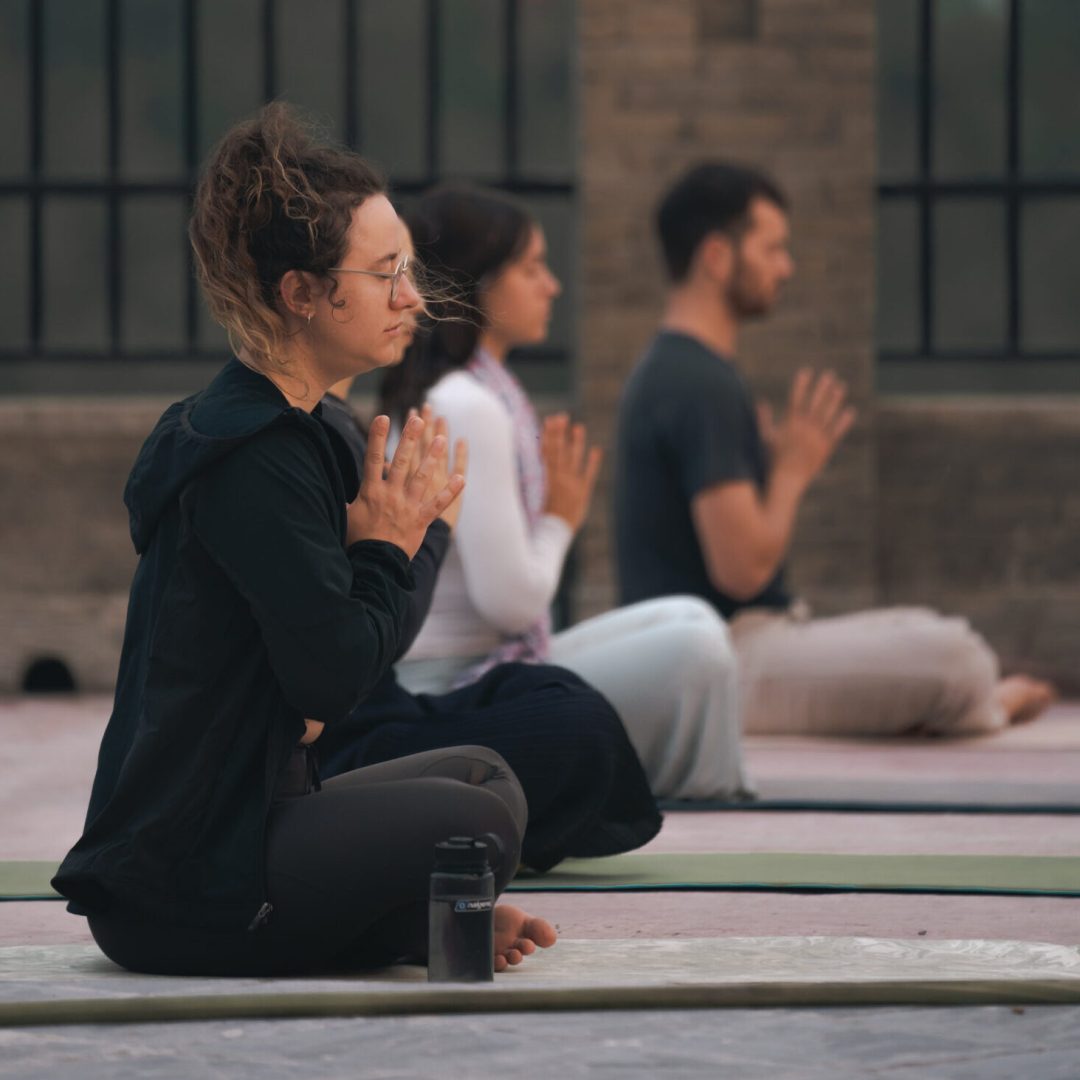
- Top notch guest speakers that have a bucket full of knowledge.
- Staff that are friendly and accommodating, where nothing is too much trouble.
- A supportive and encouraging environment that will leave you with wonderful friends from all over the world.
- A peaceful location - the perfect setting for a yoga training.
- Completely change your lifestyle with the delicious healthy organic food you’ll get during the entire training.
- Deepen your yoga practice and take it to the next level.
Amenities
We offer single-gender shared rooms, perfect for students looking for affordable accommodations without sacrificing indoor comforts. Our private rooms are an excellent choice for those who desire more privacy. Additionally, our couple’s private rooms are well-suited for couples, families, and friends seeking a bit more seclusion.




- Wifi
- Attached Bathroom
- Storage
- Power Backup
- Dinning Area
- Yogshala
Food
All meals are 100% vegetarian, featuring delicious traditional Indian dishes that are entirely plant-based.



Upcoming Dates For This Course

|
Dates
|
Twin Shared
|
Private
|
Seats left
|
Status
|
|---|---|---|---|---|
|
01st Mar To 20th Mar
|
$1,999
|
$2,699
|
15
|
Full
|
|
01st Apr To 20th Apr
|
$1,999
|
$2,699
|
15
|
Full
|
|
01st May To 20th May
|
$1,999
|
$2,699
|
15
|
Full
|
|
01st June To 20th June
|
$1,999
|
$2,699
|
15
|
Full
|
|
01st July To 20th July
|
$1,999
|
$2,699
|
15
|
Full
|
|
01st Aug To 20th Aug
|
$1,999
|
$2,699
|
15
|
Full
|
|
01st Sep To 20th Sep
|
$1,999
|
$2,699
|
15
|
Open
|
|
01st Oct To 20th Oct
|
$1,999
|
$2,699
|
15
|
Open
|
|
01st Nov To 20th Nov
|
$1,999
|
$2,699
|
15
|
Open
|
|
01st Dec To 20th Dec
|
$1,999
|
$2,699
|
15
|
Open
|
How To Reach Upasana Yogshala


Nagurah International Airport
Nagurah International Airport is 28 KM away from our school.
Included
- Twin Shared & Private Accommodation
- 03 Times Yogic Meals
- Welcome Kit
- Daily Excursion
- Nagurah International Airport Pickup
Excluded
- Air fare
- Visa & Others
- Personal Expenses
- Extra Night Stay
Yoga Alliance Certification

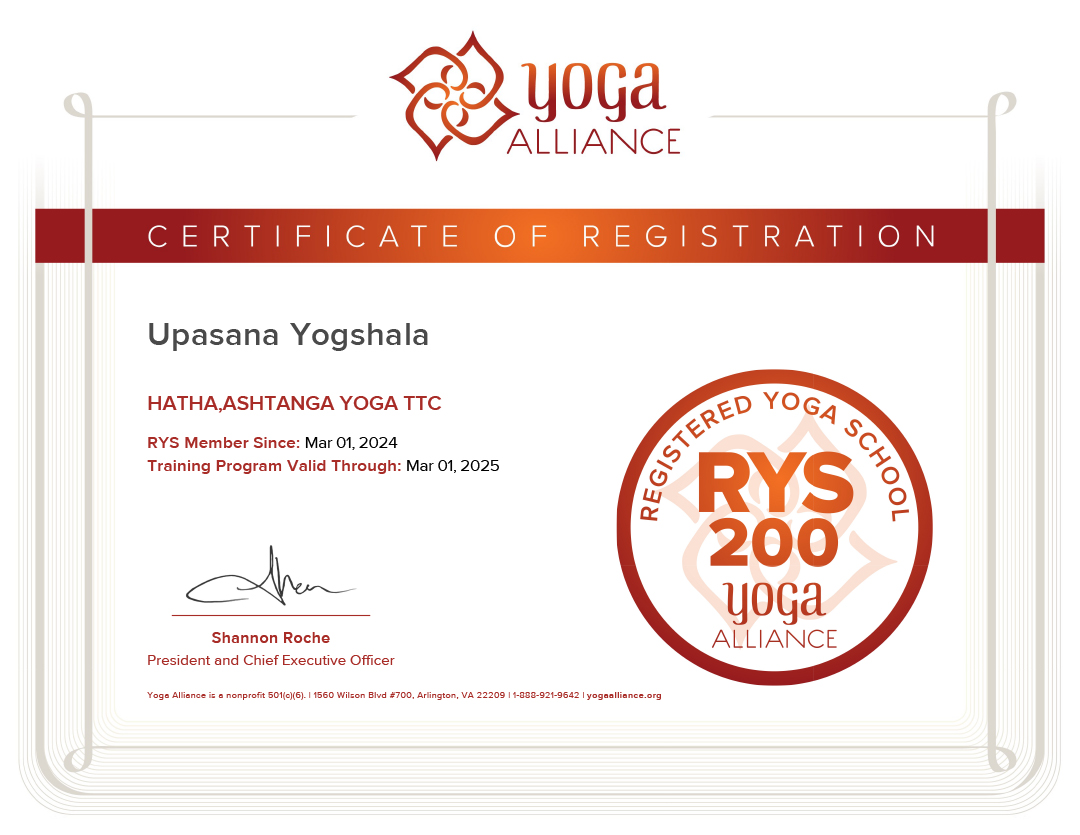
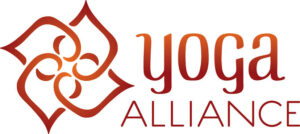
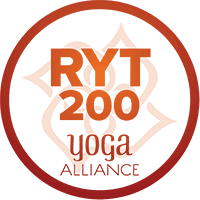
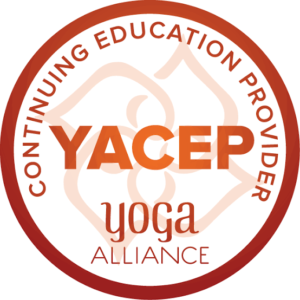

 By
By 




"Upon completing the 200-Hour Yoga Teacher Training Course (TTC) at Upasana Yogshala, students will receive their certification, backed by our RYS200 credential. This certification qualifies graduates to register as a Registered Yoga Teacher (RYT200)."
Yoga Alliance Registered Yoga School